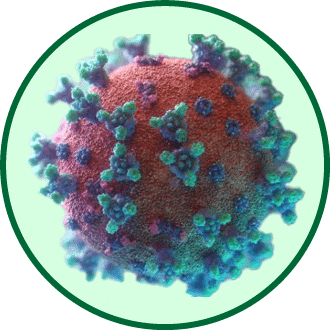Understanding Respiratory Illnesses: Navigating the Fundamentals of COVID-19, Influenza, Bronchitis, and Pneumonia
Introduction:
COVID-19 symptoms are similar to various respiratory illnesses that are a significant health concern globally, often burdening healthcare systems, especially during seasonal outbreaks. Understanding the basics of prevalent respiratory conditions like the flu, bronchitis, and pneumonia is vital in promoting preventive measures, timely treatment, and effective recovery strategies. This comprehensive guide delves into the symptoms, causes, treatments, and prevention of these common ailments, aiming to equip you with the knowledge to safeguard your respiratory health.
1. The Influenza Virus: More Than Just "The Flu" Influenza, commonly referred to as the flu, is a highly contagious respiratory infection caused by influenza viruses. It's notorious for seasonal outbreaks and can affect anyone, from children to seniors.
Symptoms: Flu symptoms can range from mild to severe and typically include fever, cough, sore throat, muscle aches, headaches, and fatigue.
Causes: The flu spreads via tiny droplets produced when infected individuals cough, sneeze, or talk. These droplets can land in the mouths or noses of people nearby or possibly be inhaled into the lungs.
Treatment: Antiviral medications can lessen symptoms and shorten the duration if taken within 48 hours of the first signs. Additionally, rest, hydration, and over-the-counter remedies are recommended for symptom relief.
Prevention: Annual flu vaccines are the best defense. Other preventive measures include practicing good hand hygiene, avoiding close contact with sick individuals, and adhering to public health guidelines, especially during flu season.
2. Bronchitis: When Your Airways Become Inflamed Bronchitis occurs when the bronchial tubes, which carry air to your lungs, become inflamed. It comes in two forms: acute, which is more common and often develops from a cold or respiratory infection, and chronic, which is a more serious condition that continually irritates and inflames the bronchial tubes.
Symptoms: Both types cause a persistent cough, but chronic bronchitis also leads to increased mucus production, shortness of breath, and wheezing.
Causes: Acute bronchitis is commonly due to viruses, while chronic bronchitis is often linked to cigarette smoking, air pollution, dust, and toxic gases in the environment.
Treatment: Treatment for acute bronchitis focuses on relieving symptoms and may include cough suppressants and pain relievers. Chronic bronchitis treatments may include inhalers, oxygen therapy, and even pulmonary rehabilitation programs.
Prevention: Avoiding smoking, minimizing exposure to lung irritants, and wearing masks in polluted environments can prevent bronchitis. Regular handwashing and vaccinations also reduce risk.
3. Pneumonia: A Serious Lung Infection Pneumonia is an infection that inflames the air sacs in one or both lungs, which may fill with fluid or pus, causing cough with phlegm, fever, chills, and difficulty breathing.
Symptoms: They range from mild to life-threatening and can include chest pain, confusion, cough, fever, and shortness of breath.
Causes: Numerous pathogens can cause pneumonia, including bacteria, viruses, and fungi. The most common type, community-acquired pneumonia, stems from bacteria and viruses typically transmitted through person-to-person contact.
Treatment: Bacterial pneumonia requires antibiotics, while viral pneumonia may be treated with antiviral medications. Supportive care like pain relievers, cough medicine, and fever reducers can help alleviate symptoms.
Prevention: Vaccines are available against some common bacterial and viral causes of pneumonia. Other preventive measures mirror those for flu and bronchitis.
Conclusion: In understanding respiratory illnesses like flu, bronchitis, and pneumonia, awareness is our ally. Recognizing the symptoms, seeking prompt treatment, and adhering to preventive practices can significantly reduce the health impact of these conditions. While anyone can be affected, the young, the elderly, and individuals with weakened immune systems or preexisting health conditions are at an increased risk. Therefore, public education and health literacy remain crucial in the fight against these common respiratory illnesses. Remember, always consult with a healthcare professional for accurate diagnosis and treatment.
(Note: This article is informational in nature and should never substitute professional medical advice.)
